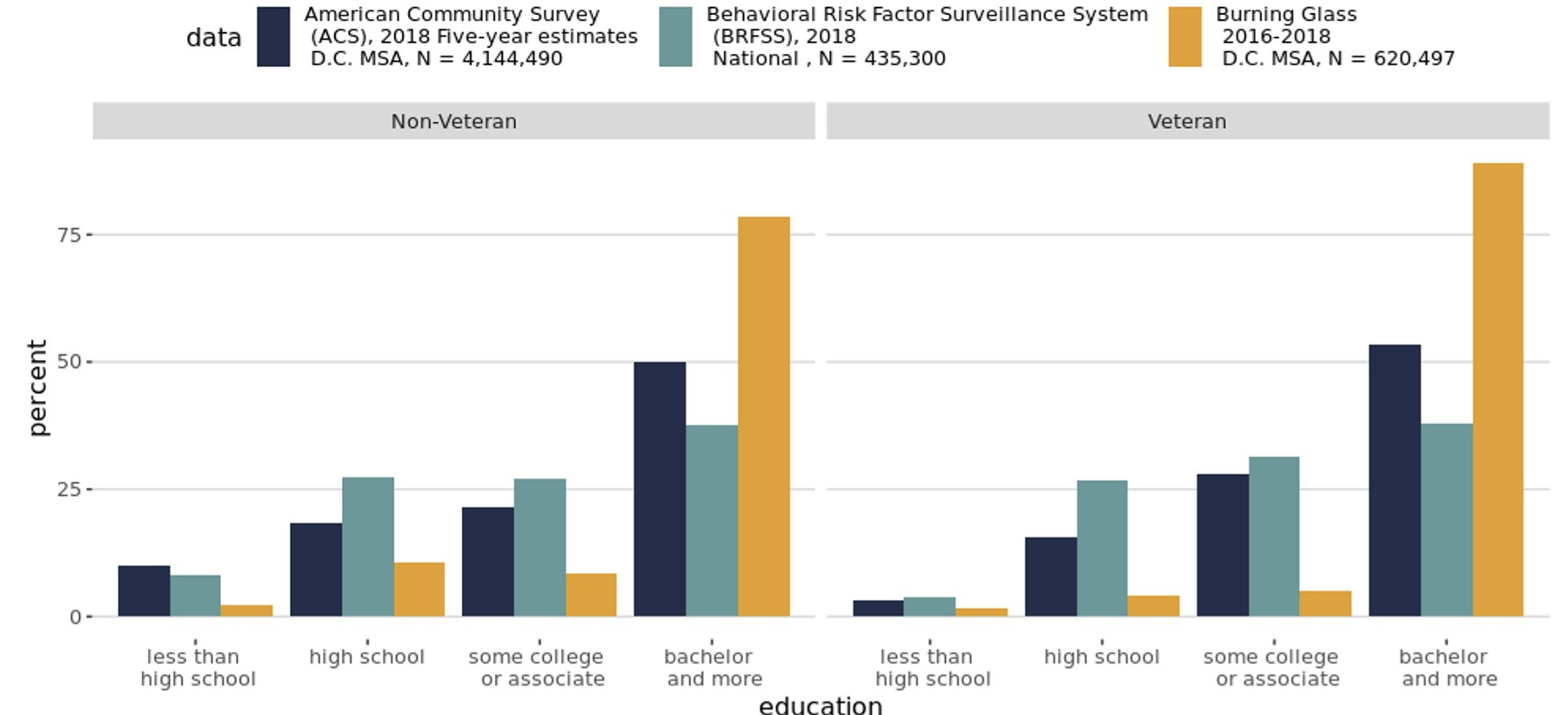Results Overview
Outline of main findings
Main Findings
From our research, we have come to several major findings.
Data profiling, benchmarking, and exploration.
1. BGT resume data overrepresents young and white collar veterans.


Sequence analysis
2. While there is some evidence to support career mobility for veterans over the entire career, there is little evidence to support career mobility for veterans as a group in the first ten years after they exit the military.
3. Almost half of veterans are in a state of unemployment in the first and tenth years after they exit the military.

In Figure 2, we define career mobility as a change towards higher job zone. Looking at the width of job zone bands, higher job zones increase over time for the whole career but stay relatively even in the first ten years. This suggests veteran careers are not very mobile in the first ten years after military exit.
Figure 2 also shows high proportions of unemployment for veterans in the first and tenth years after military exit. In the first year, almost half of veterans are in a state of military transitional unemployment. In the tenth year, almost half are retired or have exited the labor force.
Clustering of sequences
4. Sequence clusters characterized by a higher average job zone also contain more advanced degree earners.

|

|
5. Female veterans are more likely to retire or to exit the work force after the conclusion of their military careers.

|

|
Tournament theory hypothesis
6. Promotion in the first two years after military exit affects later employment outcomes, being associated with future employment.
7. Military transitional unemployment in the first two years after military exit affects later employment outcomes, being associated with future unemployment and finishing in a lower job zone.
Future work
- Explore employment outcomes of non-veterans in DC for a point of comparison.
- Analyze other geographic areas.
- Implement new methods or techniques.